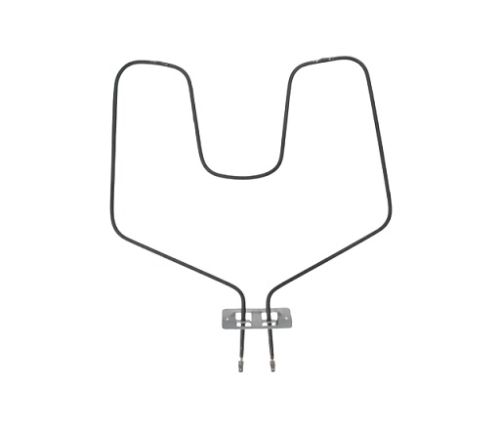
Expert Advice: Common Oven Bake Element Issues and How to Fix Them
The oven is a staple in every American kitchen, relied upon for daily meals and weekend baking alike. Its performance depends largely on the oven element, which generates steady heat for even cooking. When the oven bake element fails, it can halt meal preparation entirely. Understanding oven bake element issues helps homeowners identify the source of the problem early and take cost-effective action.
This guide explores how the oven bake element works, common causes of failure, and precise steps for safe repairs. It also outlines when oven bake element replacement becomes necessary and what maintenance practices can prevent future malfunctions. Whether the problem is a damaged oven bake element wire connector, this guide provides practical direction to restore your appliance’s efficiency while maintaining long-term reliability.
Why Oven Bake Elements Matter?
The oven element is essential to achieving consistent heat for cooking, baking, and roasting. It converts electrical current into radiant heat, maintaining temperature accuracy. When the oven bake element shows signs of not working, such as uneven heating, slow preheating, or sparking, it affects food quality and energy efficiency.
-
A well-functioning bottom heating element ensures a steady temperature distribution throughout the oven. A burnt or broken element can cause cold spots or overheating.
-
Problems often result from corrosion, damaged insulation, or a loose wire connector. Ignoring these issues can increase energy consumption and lead to higher oven repair costs.
Routine inspections and timely oven bake element replacement safeguard performance and minimize repair expenses in the long term.
How the Oven Bake Element Works
Typically positioned at the bottom interior of most ovens, the bottom heating element for the oven generates heat via electrical resistance.
-
When current passes through the metal coil, the oven bake element resistor restricts flow, causing the coil to glow red-hot and release radiant heat. This process ensures uniform temperature levels for even cooking.
-
When the oven bake element is not heating, it signals a failure within this circuit. Causes may include a worn resistor, burnt wire, or disconnected terminal at the oven bake element wire connector.
-
Because the oven bake element location is exposed to food spills and moisture, deterioration can occur faster than expected.
Recognizing these signs early allows homeowners to schedule oven bake element replacement before complete failure, avoiding expensive professional service and controlling overall oven bake element replacement cost.
Common Oven Bake Element Issues, Causes & Step-by-Step Fixes
Identifying the exact oven bake element issue is the first step toward a successful repair. Below, we address the most prevalent problems and offer actionable solutions.
1. Element not heating up
A non-heating oven is one of the most frequent oven bake element issues. When the oven element stops producing heat, it’s typically due to internal fractures, burnt wiring, or a malfunctioning control board.
Causes:
-
Burnt or broken element coil
-
Loose oven bake element wire connector
-
Faulty oven control relay
The Dacor ERD30s06 bake element may not be heating due to a tripped thermal fuse, a failed bake element, a power supply issue, or a problem with the control board.
Step-by-step fix:
-
Disconnect power to ensure safety.
-
Inspect the element for visible breaks or dark spots.
-
Remove the back panel to access the oven bake element wire connector.
-
Use a multimeter to test continuity—if none, a new oven bake element replacement is required.
-
Install the compatible bottom oven element replacement and tighten connectors.
Testing afterward ensures the issue isn’t due to a deeper wiring fault. Prompt replacement keeps the oven bake element not working problem from escalating and limits oven bake element replacement cost.
2. Uneven heating
Unevenly cooked food often indicates a partially burnt oven element. This can lead to poor browning or raw sections in baked dishes.
Causes:
-
Half-burnt bottom heating element for oven
-
Damaged oven bake element resistor
-
Incorrect oven bake element location or installation
Step-by-step fix:
-
Turn on the empty oven and observe if the element glows evenly.
-
If only part of the coil heats, the oven bake element not heating fully requires replacement.
-
Check for proper fit and ensure all wiring connections are tight.
-
Replace with a compatible bottom oven element replacement.
Regular inspection avoids uneven heat distribution, reduces cooking time, and prevents premature failure. Preventive care can help maintain efficiency and minimize oven heating element replacement cost over time.
3. Element glows but doesn’t heat properly
Sometimes, the oven element appears functional but does not achieve the required temperature, causing undercooked meals.
Causes:
-
Weak or deteriorating oven bake element resistor
-
Partially broken coil
-
Faulty wiring or oven bake element wire connector
Step-by-step fix:
-
Turn off the power and inspect the wiring.
-
Test resistance with a multimeter; if values fall outside the recommended range, replace the part.
-
Examine the oven bake element location for loose or corroded terminals.
-
Install a new oven bake element replacement ensuring connectors are secure.
When internal degradation causes performance decline, ignoring it may raise long-term oven bake element replacement cost. Prompt action ensures efficient energy transfer and consistent heating, restoring the oven’s intended performance.
4. Element sparks or shorts out
Oven heating element sparking is a serious issue requiring immediate shutdown. It signals exposed wiring, a short, or a cracked element coating.
Causes:
Damaged oven bake element wire connector
Cracked insulation on the element
Faulty control circuit
Step-by-step fix:
-
Disconnect the oven from power immediately.
-
Check the wiring behind the panel for burns or melting.
-
Replace the damaged oven element or wiring.
-
Inspect nearby connectors to prevent recurrence.
-
Test again with a new bottom oven element replacement.
A single spark can escalate into broader damage if ignored. Regular maintenance of the oven bake element location helps prevent shorts and keeps oven heating element replacement cost low over time.
5. Oven not heating in broil mode
Although broil mode typically uses an upper element, issues can still relate to the oven bake element not working if wiring overlaps.
Causes:
-
Defective broil element
-
Wiring fault from recent repair
-
Failed control board
Step-by-step fix:
-
Test both elements for continuity.
-
Verify wiring between the control board and oven bake element wire connector.
-
Replace the faulty part if readings fail.
-
Reinstall correctly and retest in both bake and broil modes.
Addressing related electrical faults ensures efficient operation. If the oven remains inoperative, professional inspection may be needed to avoid unnecessary oven bake element replacement costs.
6. Heating element has a burnt smell
A burnt odor often points to a faulty heating element or melted wire insulation.
Causes:
Overheating or electrical short
Burnt oven bake element wire connector
Step-by-step fix:
-
Turn off power and allow the oven to cool.
-
Remove the lower panel and inspect for burns or discoloration.
-
Replace the affected oven element and connectors.
-
Reinstall securely and test for smooth operation.
Ignoring this smell can lead to oven heating element sparking or wire damage. Replacing components quickly prevents safety risks and keeps oven bake element replacement cost under control.
How to Test and Replace a GE Oven Heating Element: A Complete Repair Guide
7. Oven bottom element not heating
The bottom heating element for oven plays the most critical role in standard baking. When it fails, performance drops significantly.
Causes:
-
Old or burnt oven bake element
-
Broken oven bake element resistor
-
Damaged or loose connector
Step-by-step fix:
-
Unplug and remove the bottom panel.
-
Test the oven bake element wire connector for tightness.
-
Replace with a compatible bottom oven element replacement.
-
Secure wiring before restoring power.
Routine maintenance of the oven bake element location prevents most failures. Swapping a deteriorated element early saves money on overall oven bake element replacement cost and ensures the oven reheats quickly.
8. Oven side bake element not working
In ovens with dual or side heating components, the same oven bake element issues can occur.
Causes:
-
Loose wiring connection
-
Corroded oven bake element wire connector
-
Broken element coil
Step-by-step fix:
-
Inspect side heating areas for visible breaks or discoloration.
-
Test continuity; if it fails, perform oven bake element replacement.
-
Verify proper oven bake element location and reassemble.
Replacing these components restores balanced heating and reduces energy loss, keeping the oven in prime condition while managing oven heating element replacement cost effectively.
9. Oven blew up at connector with element
A loud pop or smoke from the oven bake element wire connector suggests a severe electrical short.
Causes:
-
Severely burnt connector
-
Shorted oven element
-
Electrical surge
Step-by-step fix:
-
Disconnect the oven and cut power at the breaker.
-
Inspect connectors and wiring for charring.
-
Replace both damaged wires and the faulty heating element oven.
-
Install a reliable bottom oven element replacement.
-
Retest after confirming all connections are insulated.
Leaving damaged wiring in place may cause recurrent oven heating element sparking or fire hazards. Repairing promptly maintains safety and controls oven heating element replacement cost.
10. Oven not heating up after replacing the element
If the oven not heating up after replacing the element, installation errors or internal electrical faults are the likely culprits.
Causes:
-
Incorrect oven bake element location
-
Broken thermostat or control board
-
Loose oven bake element wire connector
Step-by-step fix:
-
Double-check connections and mounting points.
-
Test continuity at both terminals.
-
Replace any failed oven bake element resistor.
-
If still inoperative, contact a technician to prevent higher oven bake element replacement cost.
Ensuring the correct part fit and clean wiring avoids unnecessary repeat repairs. Verifying all electrical paths helps maintain stable performance of the oven element.
When and How to Replace a Faulty Bake Element
|
Step |
Description |
|
When to replace |
|
|
Oven is not heating properly |
|
|
Visible damage on the element |
|
|
Electrical issues |
|
|
How to Replace |
|
|
Disconnect power |
|
|
Remove screws |
|
|
Unplug wire connectors |
|
|
Install new element |
|
|
Reconnect & test |
|
Maintenance Tips to Prevent Future Bake Element Issues
Proper maintenance reduces the chance of unexpected oven bake element issues.
-
Inspect the oven bake element location monthly for dirt or residue.
-
Keep the bottom heating element for oven clean and free of grease.
-
Tighten the oven bake element wire connector if loose.
-
Replace aging oven bake element resistor parts periodically.
-
Avoid covering racks with foil, which traps heat and can cause oven heating element sparking.
Consistent inspection helps extend element lifespan and maintain energy efficiency. Preventive attention is far cheaper than emergency oven bake element replacement cost or professional repairs.
How to Choose the Right Stove Knob for Your Oven
Keeping Your Oven Performing at Its Best
Maintaining an oven’s heating performance depends on timely attention to oven bake element issues. Addressing early warning signs, such as the oven bake element not heating, uneven baking, or the oven heating element sparking, helps prevent major malfunctions. When replacement is necessary, choosing a compatible part minimizes both downtime and oven bake element replacement cost.
Regular cleaning, proper ventilation, and responsible operation reduce stress on the faulty heating element oven, keeping repairs minimal and predictable.
Homeowners who follow these practices will enjoy consistent heating, longer-lasting elements, and better cooking performance, proof that investing in proper maintenance and timely oven bake element replacement pays off over time. HnK Parts offers an extensive range of oven replacement parts and gas stove repair parts, including the range control panel, oven door hinge spring, oven non-return valve, display upper panel covers, oven grids, and oven base tray cover compatible with top brands.
FAQs
How do I know if my bake element is bad?
A bad oven bake element often shows visible damage like blisters, burns, or breaks. If the oven isn’t heating evenly or not reaching the set temperature, the bake element may need replacement.
Is it worth replacing the heating element in the oven?
Yes, replacing the oven heating element is usually cost-effective. It restores proper heating performance without the need for a full oven replacement.
What happens when the oven element goes out?
When the oven element goes out, the oven won’t heat properly or may stop baking altogether. Replacing the bake element quickly helps restore normal operation.











